Analytics engineers need a unique blend of data skills and cloud expertise to succeed in today’s tech landscape. The three major cloud platforms – AWS, Azure, and Google Cloud Platform dominate the market, each offering comprehensive services for computing, storage, and data analytics. Mastering cloud computing skills across these platforms enables analytics engineers to build scalable data pipelines, optimize costs, and deliver insights that drive business decisions.
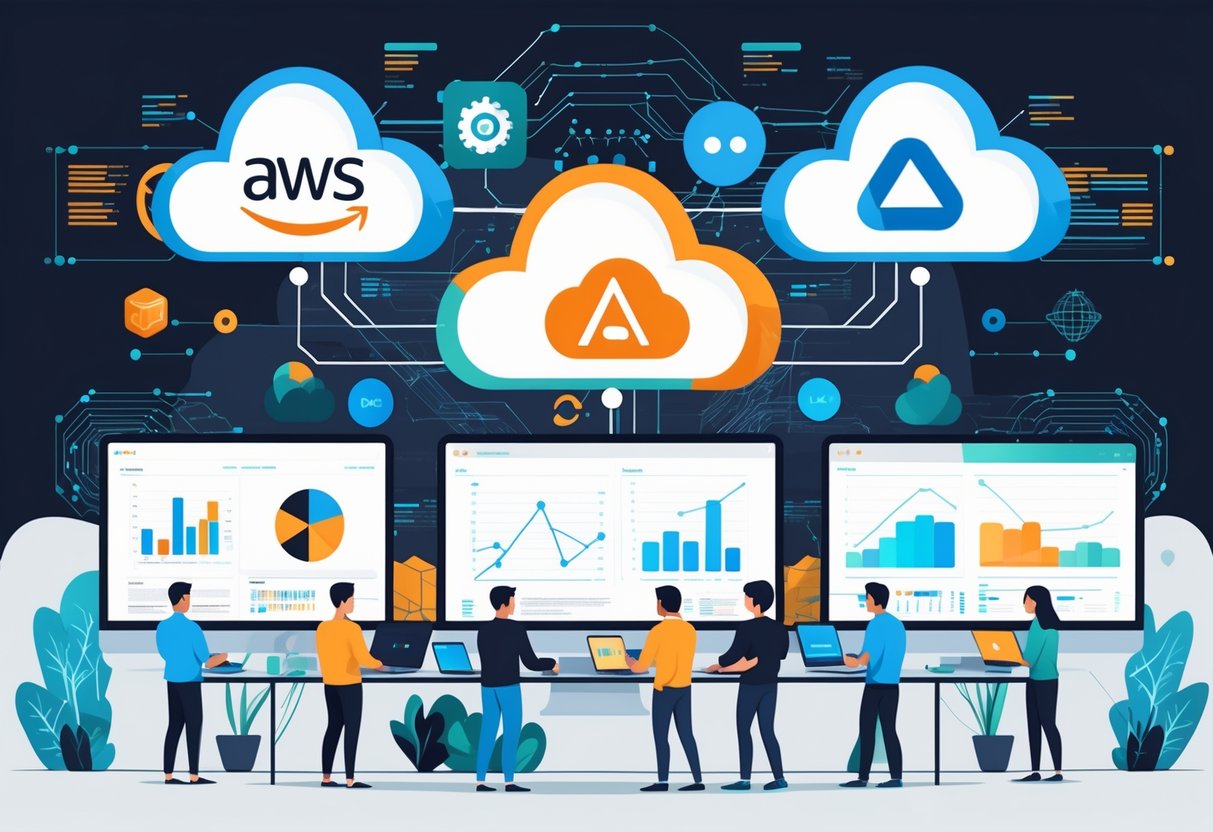
Cloud engineers must understand more than just platform basics to excel in analytics roles. They need expertise in programming languages like Python and SQL, database management, automation tools, and security practices. The global cloud computing market is projected to reach over $2 trillion by 2033 creating massive demand for professionals who can bridge data analytics and cloud infrastructure.
Analytics engineers who develop these cloud skills position themselves for high-paying opportunities in a rapidly growing field. From containerization with Docker and Kubernetes to implementing CI/CD pipelines, the technical requirements span multiple domains. Understanding how to optimize performance while managing costs becomes crucial when handling large-scale data workloads across cloud environments.
Key Takeaways
- Analytics engineers need proficiency in AWS, Azure, and GCP platforms along with programming skills like Python and SQL for successful cloud data projects
- Essential technical skills include database management, automation tools, security practices, and containerization technologies like Docker and Kubernetes
- Cost optimization and performance management are critical capabilities for handling large-scale analytics workloads in cloud environments
Core Cloud Platforms: AWS, Azure, and GCP
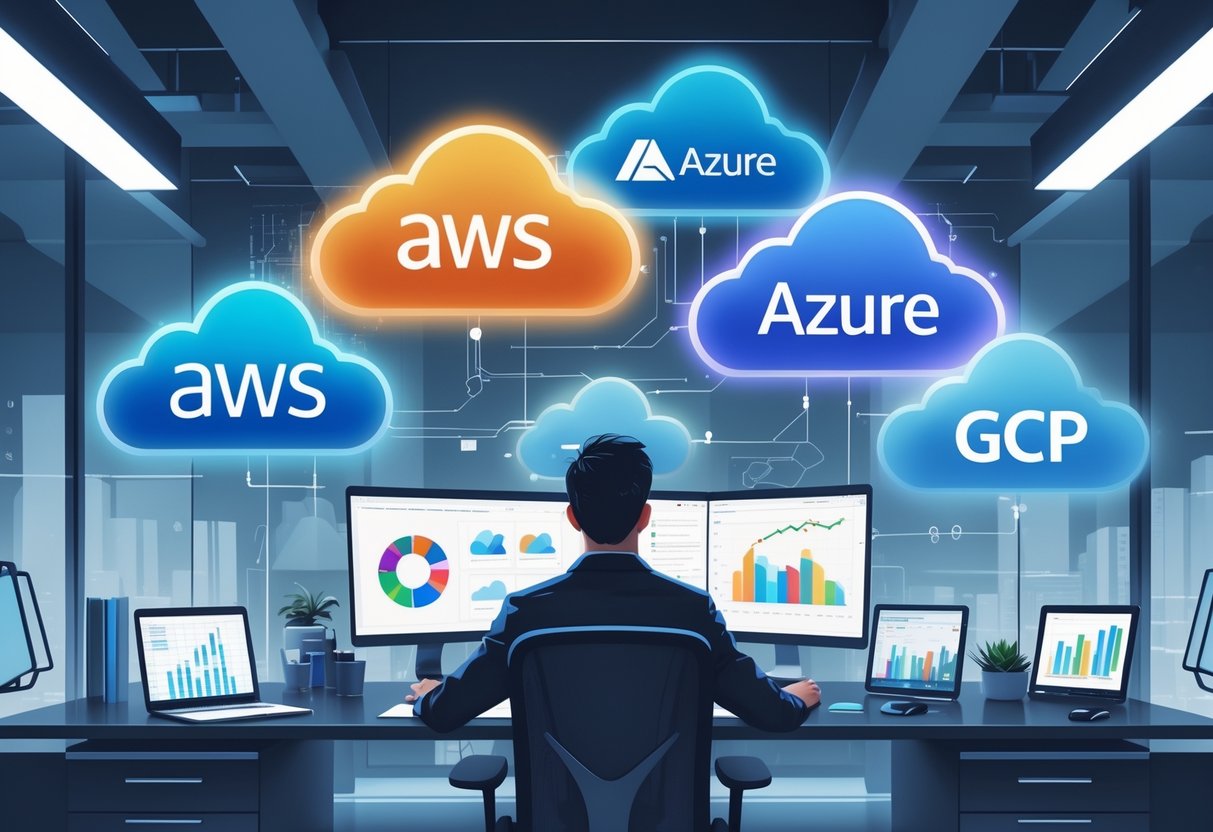
Amazon Web Services dominates with the broadest service catalog, Microsoft Azure integrates seamlessly with enterprise Microsoft tools, and Google Cloud Platform excels in data analytics and machine learning capabilities. Each platform offers distinct certification paths that align with different analytics career goals.
Comparing Key Services Across Platforms
Storage and Data Management
AWS provides S3 for object storage, Redshift for data warehousing, and RDS for managed databases. Azure offers Blob Storage, Azure Synapse Analytics, and Azure SQL Database as equivalent services. Google Cloud Platform excels in data analytics with BigQuery for data warehousing, Cloud Storage, and Cloud SQL.
Analytics and Machine Learning
GCP leads in analytics tools with BigQuery’s serverless architecture and AutoML capabilities. AWS counters with SageMaker for machine learning and EMR for big data processing. Azure provides Machine Learning Studio and HDInsight for similar functionality.
Compute Services
All three platforms offer comparable compute options. AWS EC2, Azure Virtual Machines, and Google Compute Engine provide virtual server instances. Each platform also supports containerization through managed Kubernetes services.
| Platform | Data Warehouse | Object Storage | ML Service |
|---|---|---|---|
| AWS | Redshift | S3 | SageMaker |
| Azure | Synapse Analytics | Blob Storage | ML Studio |
| GCP | BigQuery | Cloud Storage | AutoML |
Choosing the Right Platform for Analytics Tasks
For Data-Heavy Workloads
Analytics engineers working with large datasets often favor GCP. BigQuery processes petabytes of data without server management. Its columnar storage and automatic scaling make it ideal for analytics workloads.
For Enterprise Integration
Organizations using Microsoft Office 365 or Windows environments typically choose Azure. The platform integrates with existing Active Directory systems and Microsoft productivity tools. This reduces complexity for analytics teams in Microsoft-centric companies.
For Comprehensive Service Options
AWS offers the most extensive service catalog with over 250 services. Analytics engineers gain access to specialized tools for every data pipeline stage. The platform works well for complex, multi-service architectures.
Cost Considerations
GCP often provides better pricing for compute-intensive analytics tasks. AWS offers flexible pricing but requires careful monitoring. Azure may cost less for organizations with existing Microsoft licenses.
Understanding AWS, Azure, and GCP Certification Paths
AWS Certification Track
The AWS Certified Data Analytics specialty certification validates skills in data collection, storage, processing, and visualization. Prerequisites include the AWS Solutions Architect Associate certification. The exam covers services like Kinesis, Glue, and QuickSight.
Azure Certification Path
Microsoft offers the Azure Data Engineer Associate certification (DP-203). This exam focuses on data storage solutions, data processing, and data security. No prerequisites exist, but Azure fundamentals knowledge helps.
Google Cloud Certification
The Professional Data Engineer certification demonstrates expertise in designing and building data processing systems. Cloud computing professionals must understand BigQuery, Dataflow, and Pub/Sub services. The exam requires hands-on experience with GCP tools.
Certification Strategy
Most analytics engineers start with one platform certification before expanding. AWS certifications often provide broader industry recognition. Azure certifications benefit those in Microsoft-heavy environments. GCP certifications showcase specialized data analytics expertise.
Cloud Deployment and Service Models
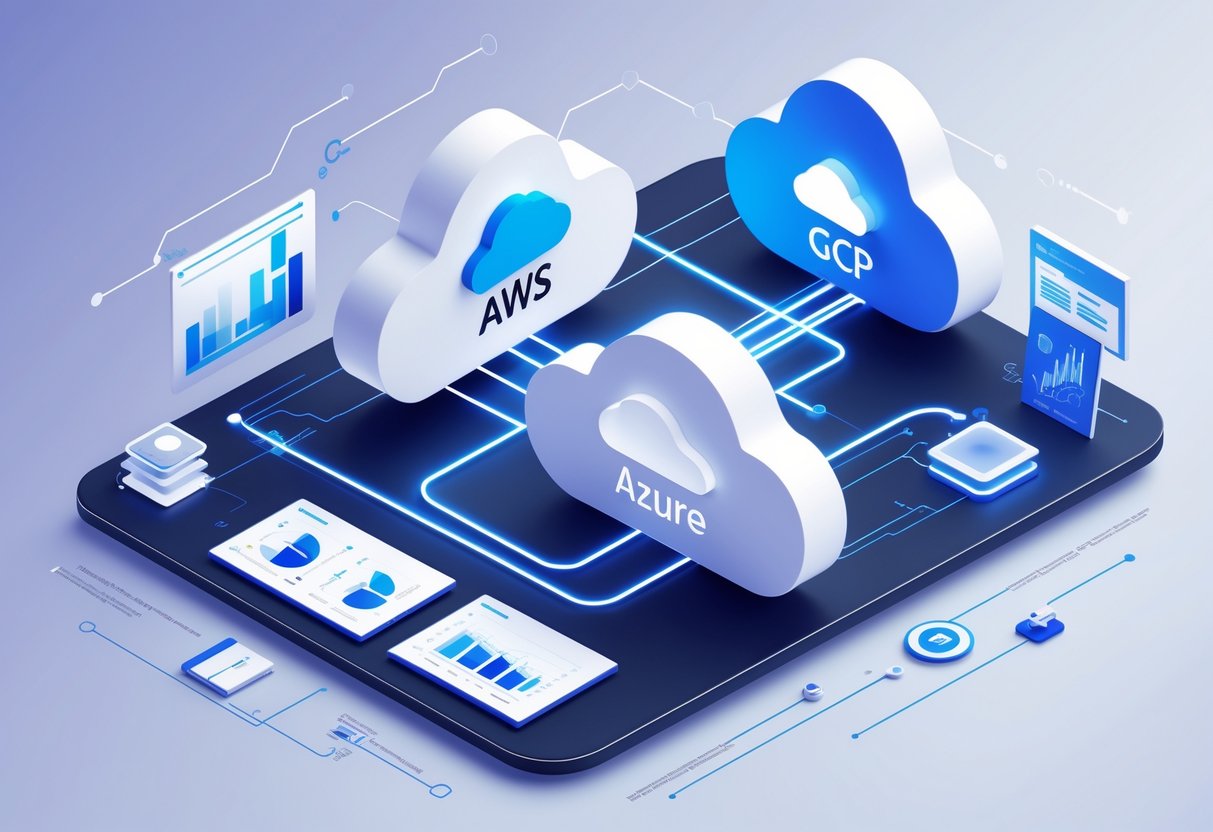
Analytics engineers must understand the three core cloud service models and four deployment options to build effective data solutions. Each model offers different levels of control, responsibility, and management overhead that directly impact analytics workflows.
Infrastructure as a Service (IaaS)
IaaS provides virtualized computing resources over the internet. Analytics engineers get raw infrastructure components like virtual machines, storage, and networking without managing physical hardware.
Key IaaS Components:
- Virtual machines for data processing
- Block and object storage for datasets
- Virtual networks for secure connections
- Load balancers for distributed workloads
Major providers offer specialized IaaS services. AWS provides EC2 instances and S3 storage. Azure offers Virtual Machines and Blob Storage. Google Cloud delivers Compute Engine and Cloud Storage.
Analytics teams use IaaS when they need full control over their environment. This includes custom data processing frameworks or specific operating system requirements.
The main benefit is flexibility. Engineers can configure servers exactly how they need them. The downside is increased management overhead for security patches, updates, and monitoring.
Platform as a Service (PaaS)
PaaS delivers a complete development and deployment environment in the cloud. Analytics engineers can build and deploy applications without managing underlying infrastructure.
PaaS Analytics Tools:
- Database services (Amazon RDS, Azure SQL Database)
- Data warehouses (Snowflake, BigQuery)
- Analytics platforms (Databricks, Azure Synapse)
- Container orchestration (Amazon EKS, Azure AKS)
This model reduces operational complexity significantly. Engineers focus on data analysis instead of server management. Automatic scaling handles varying workloads without manual intervention.
PaaS works well for standard analytics workflows. Most data visualization tools and ETL processes run smoothly on these platforms. Teams can deploy faster and spend more time on insights.
Software as a Service (SaaS)
SaaS provides ready-to-use applications accessed through web browsers. Analytics engineers use these tools for specific functions without any infrastructure management.
Common SaaS Analytics Tools:
- Business Intelligence: Tableau Online, Power BI
- Data Integration: Fivetran, Stitch Data
- Analytics Platforms: Looker, Sisense
- Collaboration: Slack, Microsoft Teams
These applications require minimal setup time. Users can start analyzing data immediately after account creation. Updates and maintenance happen automatically.
SaaS solutions work best for standardized analytics needs. They offer less customization than IaaS or PaaS options. Cost can become high with many users or heavy usage.
Deployment Models: Public, Private, Hybrid, Multi-Cloud
Cloud deployment models determine where and how analytics infrastructure runs. Each model offers different benefits for security, cost, and performance.
Public Cloud runs on shared infrastructure managed by providers like AWS, Azure, or GCP. It offers the lowest cost and fastest deployment for most analytics projects.
Private Cloud uses dedicated infrastructure for a single organization. This provides maximum security and control but requires higher investment and management overhead.
Hybrid Cloud combines public and private environments. Analytics teams can keep sensitive data on-premises while using public cloud for processing power and advanced services.
Multi-Cloud uses services from multiple providers simultaneously. Organizations avoid vendor lock-in and can choose the best tools from each platform. This approach requires expertise across different cloud environments.
Most analytics teams start with public cloud for cost and simplicity. They move to hybrid or multi-cloud as their needs become more complex or compliance requirements increase.
Programming Skills and Automation

Analytics engineers need strong programming abilities to automate cloud tasks and manage infrastructure efficiently. Programming languages like Python and JavaScript are essential for building cloud applications while Infrastructure as Code tools enable consistent deployments across AWS, Azure, and GCP platforms.
Python and PowerShell for Cloud Engineering
Python serves as the primary language for cloud automation tasks. Analytics engineers use Python to create scripts that provision resources, process data, and manage cloud services across all three major platforms.
The language integrates seamlessly with AWS boto3, Azure SDK, and Google Cloud Client Libraries. Engineers write Python scripts to automate data pipeline deployments and monitor cloud resources.
PowerShell provides essential Windows-based automation capabilities. Microsoft Azure engineers rely heavily on PowerShell for resource management and configuration tasks.
Key Python libraries for cloud work:
- boto3 – AWS service integration
- azure-sdk-for-python – Azure resource management
- google-cloud-python – GCP service automation
- pandas – Data processing and analysis
PowerShell modules like Az PowerShell enable direct Azure resource manipulation. Engineers use these tools to create repeatable deployment processes and maintain consistent cloud environments.
API Integration and RESTful Services
REST APIs form the backbone of cloud service communication. Analytics engineers must understand how to consume and create APIs for data exchange between cloud services.
APIs enable different services and applications to interact for data exchange Engineers use REST endpoints to retrieve analytics data from various cloud databases and storage systems.
Authentication methods vary by platform. AWS uses IAM roles and access keys, while Azure employs service principals and managed identities for API access.
Common API tasks include:
- Retrieving data from cloud databases
- Triggering serverless functions
- Managing storage bucket contents
- Monitoring resource usage metrics
Git version control becomes critical when managing API integration code. Engineers track changes to their automation scripts and collaborate effectively on cloud projects.
Infrastructure as Code: Terraform, AWS CloudFormation, ARM Templates
Infrastructure as Code transforms manual cloud provisioning into automated, repeatable processes. IaC tools let cloud engineers programmatically define cloud resources and configurations.
Terraform provides multi-cloud support using HashiCorp Configuration Language. Analytics engineers use Terraform to deploy identical infrastructure across AWS, Azure, and GCP environments.
AWS CloudFormation uses JSON or YAML templates for resource provisioning. Engineers define entire analytics environments including databases, compute instances, and networking components.
| Tool | Platform | Language | Best For |
|---|---|---|---|
| Terraform | Multi-cloud | HCL | Cross-platform deployments |
| CloudFormation | AWS | JSON/YAML | AWS-native solutions |
| ARM Templates | Azure | JSON | Azure resource management |
Azure Resource Manager templates enable declarative infrastructure deployment. Engineers specify desired resource states rather than step-by-step procedures.
Version control integration allows teams to track infrastructure changes. Git repositories store IAC templates alongside application code for complete project management.
Data Engineering: Databases and Cloud Storage
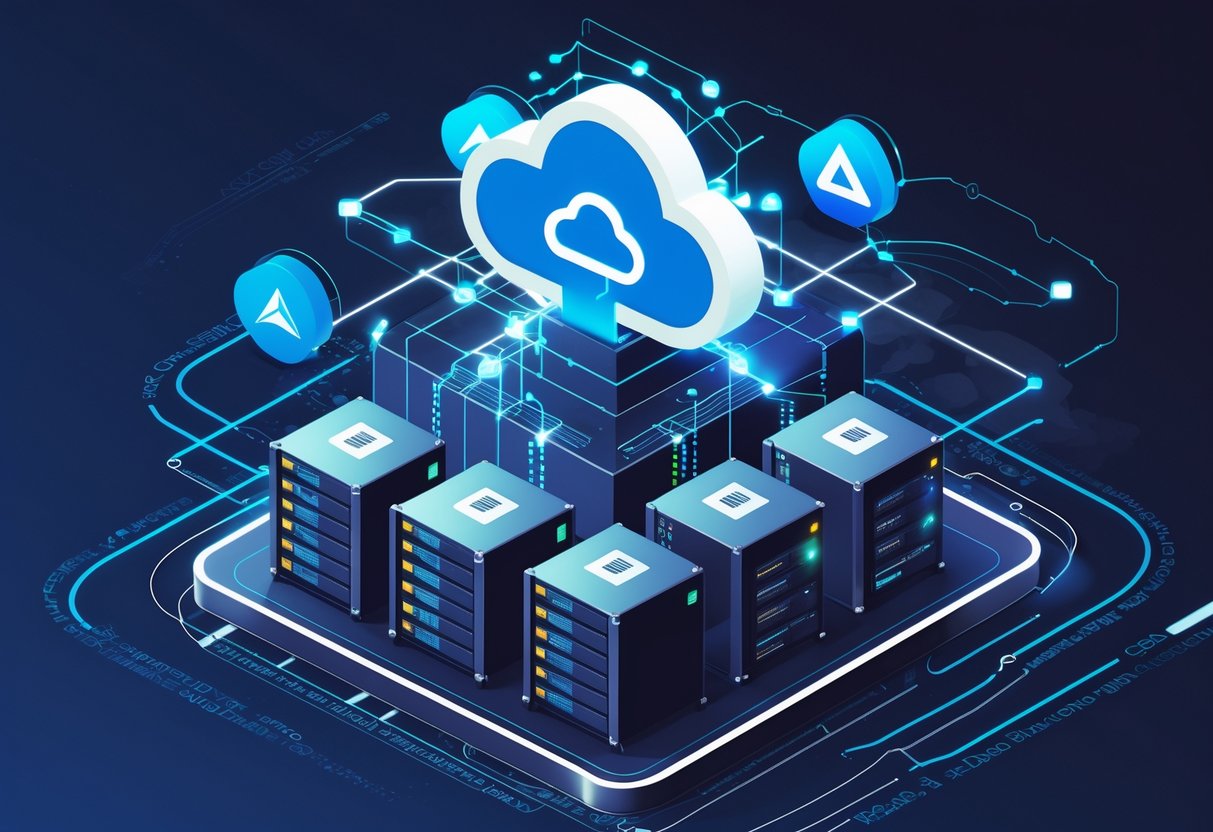
Analytics engineers need strong database and storage skills to build reliable data systems. They must handle both SQL and NoSQL databases while securing data across major cloud platforms.
Managing SQL and NoSQL Databases
SQL databases remain essential for structured data and complex queries. Analytics engineers work with relational database services like Amazon RDS, Azure SQL Database, and Google Cloud SQL.
RDS handles MySQL, PostgreSQL, and SQL Server instances. Engineers configure automated backups and scaling options. They optimize query performance through indexing and connection pooling.
NoSQL databases serve unstructured data and high-volume applications. MongoDB Atlas runs on all three cloud platforms. DynamoDB provides serverless NoSQL on AWS.
Analytics engineers choose database types based on data structure and access patterns. They design schemas for relational databases and collections for document stores.
Database management includes monitoring performance metrics. Engineers track CPU usage, memory consumption, and query response times. They set up alerts for threshold breaches.
Cloud Storage Solutions for Analytics
Amazon S3 offers object storage with multiple storage classes. Engineers use S3 Standard for frequently accessed data and Glacier for archival storage. They organize data using buckets and prefixes.
Azure Blob Storage provides hot, cool, and archive tiers. Analytics engineers configure lifecycle policies to move data between tiers automatically. They use containers to group related files.
Google Cloud Storage includes Standard, Nearline, Coldline, and Archive classes. Engineers select storage classes based on access frequency and cost requirements.
All three platforms support data lakes for analytics workloads. Engineers store raw data in cost-effective storage classes. They use cloud storage for backup and disaster recovery.
Storage optimization reduces costs significantly. Engineers implement data compression and deduplication strategies. They monitor storage usage and spending regularly.
Database Security and Encryption
Encryption protects data at rest and in transit. Analytics engineers enable encryption for all database instances and storage buckets. They use platform-managed keys or customer-managed keys.
Cloud services provide built-in security features. Engineers configure network security groups and virtual private clouds. They restrict database access to specific IP ranges.
Identity and access management controls user permissions. Engineers create service accounts with minimal required privileges. They use multi-factor authentication for administrative access.
Database security includes regular updates and patches. Engineers apply security updates during maintenance windows. They monitor for suspicious access patterns and failed login attempts.
Compliance requirements guide security configurations. Engineers implement data masking for sensitive information. They maintain audit logs for regulatory reporting and forensic analysis.
Network Architecture and Cloud Security
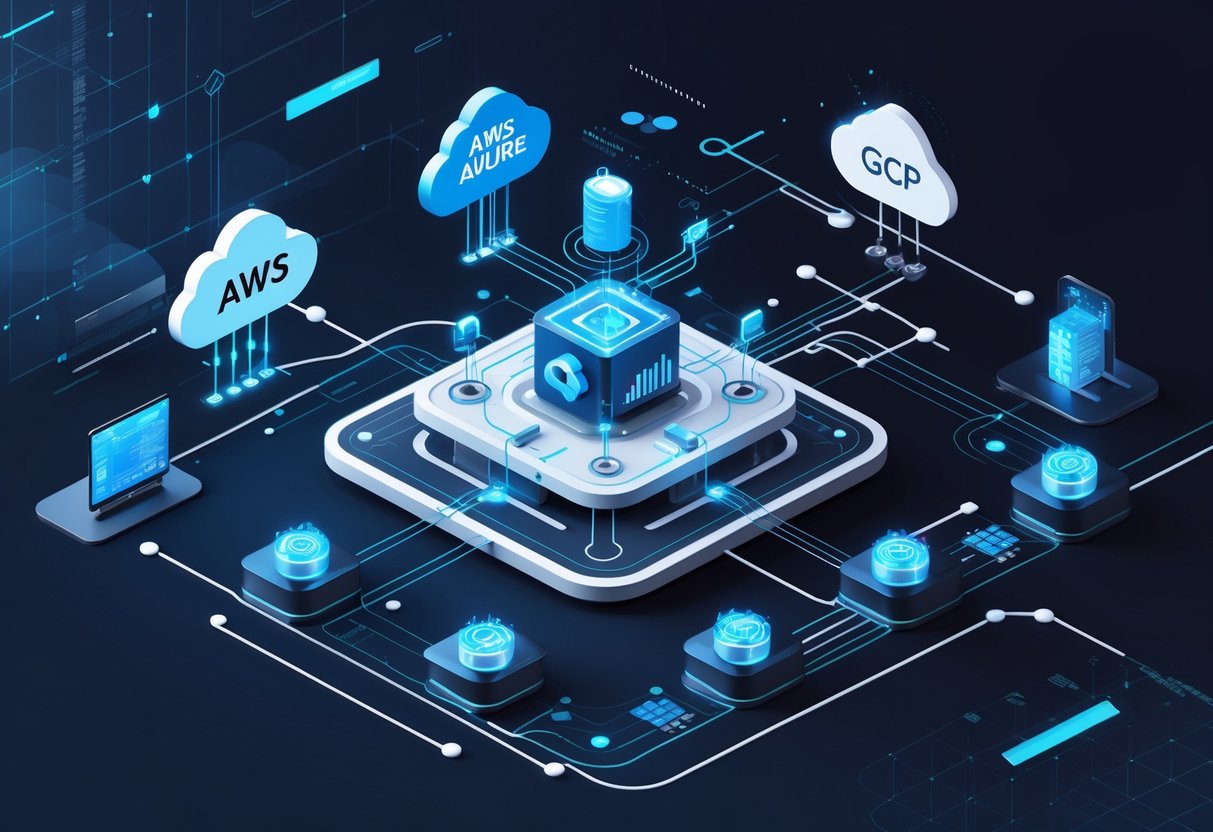
Analytics engineers must master VPC configurations, IAM policies, and encryption standards to build secure data pipelines. These skills ensure protected data flows between cloud services while maintaining compliance with industry regulations.
Virtual Private Cloud (VPC) and Networking Fundamentals
A virtual private cloud creates isolated network environments within public cloud platforms. Analytics engineers use VPCs to control data traffic between analytics services and external systems.
Key VPC Components:
- Subnets: Public subnets for web-facing services, private subnets for databases
- Route tables: Direct traffic between subnets and external networks
- Security groups: Act as virtual firewalls for individual resources
- Network ACLs: Provide subnet-level access control
Engineers configure VPN connections to link on-premises data centers with cloud analytics platforms. This enables secure data transfers from internal databases to cloud warehouses.
Essential networking skills include understanding TCP/IP protocols, DNS resolution, and load balancing. Analytics workloads require specific network configurations for optimal performance.
Cross-region networking becomes critical when analytics teams deploy multi-region architectures. Engineers must understand latency impacts and data transfer costs between regions.
Identity and Access Management (IAM)
Identity and access management controls who can access analytics resources and what actions they can perform. IAM policies define permissions for users, applications, and services.
Analytics engineers create role-based access controls for different team members:
- Data scientists: Read access to processed datasets
- Data engineers: Full access to ETL pipelines and storage
- Business analysts: Limited query access to specific databases
Service accounts enable automated analytics processes to access cloud resources securely. These accounts use programmatic credentials instead of user passwords.
IAM best practices include:
- Principle of least privilege access
- Regular access reviews and permission audits
- Multi-factor authentication for sensitive resources
- Temporary credentials for cross-account access
Engineers implement resource-based policies to control access at the service level. Data lakes and warehouses require granular permissions for different datasets and schemas.
Encryption, Security, and Compliance
Encryption protects analytics data both in transit and at rest. Cloud platforms provide automatic encryption for most storage services, but engineers must configure additional security layers.
Data-in-transit encryption uses TLS/SSL protocols for API calls and data transfers. Analytics pipelines require encrypted connections between all processing stages.
Data-at-rest encryption protects stored datasets using platform-managed or customer-managed keys. Sensitive analytics data often requires customer-controlled encryption keys.
Cloud security encompasses monitoring, logging, and threat detection. Engineers implement CloudTrail, Security Hub, and similar services to track resource access.
Compliance frameworks like GDPR, HIPAA, and SOC 2 require specific security controls. Analytics environments must implement data retention policies, access logging, and audit trails.
Key security practices include:
- Regular security assessments and penetration testing
- Automated vulnerability scanning for analytics infrastructure
- Data classification and handling procedures
- Incident response plans for data breaches
DevOps, CI/CD, and Cloud Automation
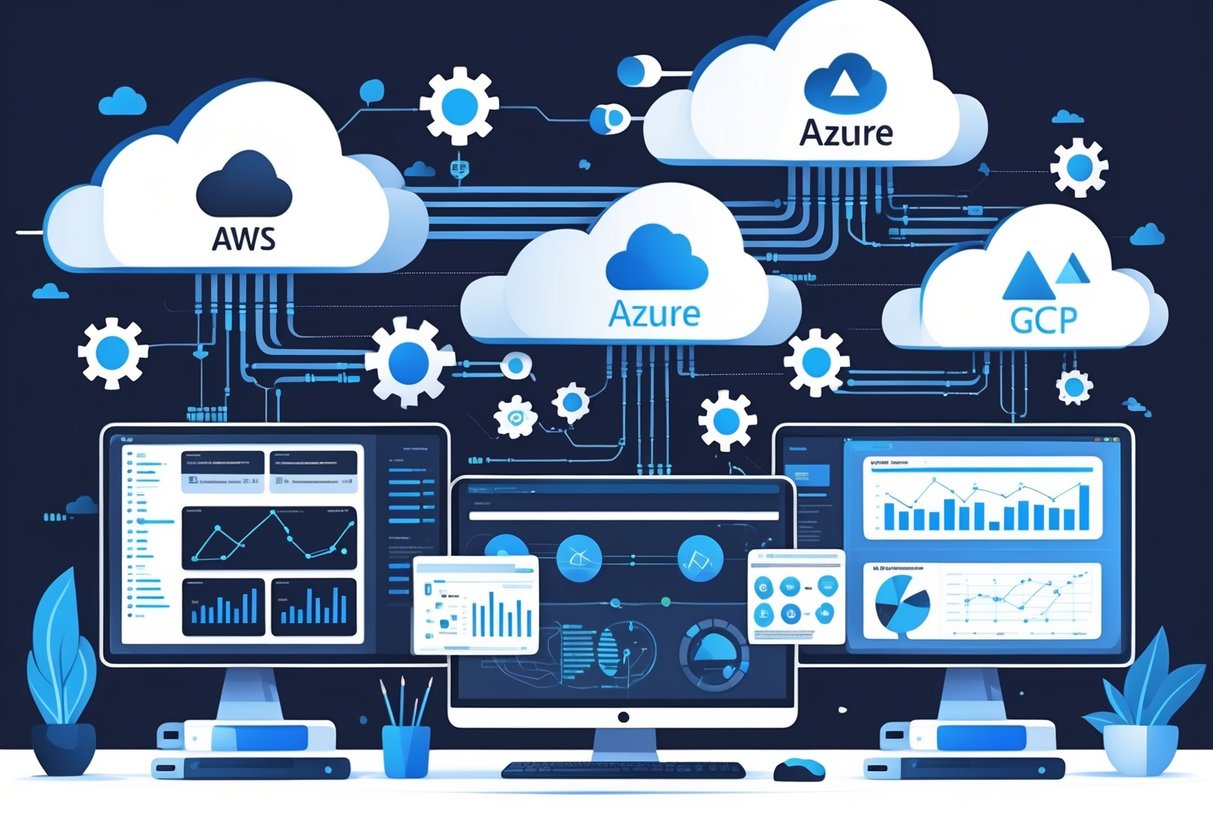
Analytics engineers need automated deployment pipelines to move data models and transformations from development to production reliably. Cloud platforms provide native tools for continuous integration and deployment that reduce manual errors and speed up delivery cycles.
CI/CD Pipelines with Jenkins and GitHub Actions
Jenkins remains a popular choice for building CI/CD pipelines in cloud environments. Analytics engineers can configure Jenkins to automatically test data quality checks and deploy dbt models when code changes are pushed to repositories.
GitHub Actions offers simpler setup for teams already using GitHub. The platform provides pre-built actions for deploying to AWS, Azure, and GCP without complex server management.
Key pipeline stages for analytics workflows:
- Code validation and linting
- Data quality testing
- Model compilation and testing
- Deployment to staging environments
- Production deployment with approvals
Both tools integrate with cloud-native services like AWS CodeBuild and Azure DevOps. This integration allows teams to leverage cloud computing resources for faster build times and automatic scaling.
DevOps Principles in Cloud Analytics
DevOps practices in cloud environments focus on automation, collaboration, and reliable deployments. Analytics engineers apply these principles to data infrastructure and transformation workflows.
Infrastructure as Code (IaC) tools like Terraform and CloudFormation let teams version control their cloud resources. Data warehouses, storage buckets, and compute clusters become reproducible and consistent across environments.
Core DevOps practices for analytics:
- Version control for all code and configurations
- Automated testing of data transformations
- Staged deployment environments
- Rollback capabilities for failed deployments
Cloud platforms provide managed services that reduce operational overhead. AWS Glue, Azure Data Factory, and Google Cloud Dataflow handle infrastructure scaling automatically while maintaining DevOps workflows.
Monitoring, Logging, and Observability
Effective monitoring systems track both infrastructure health and data pipeline performance. Cloud platforms offer native monitoring tools that integrate with analytics workloads without additional setup complexity.
Essential monitoring metrics:
- Pipeline execution times and success rates
- Data freshness and volume changes
- Resource utilization and costs
- Error rates and data quality issues
AWS CloudWatch, Azure Monitor, and Google Cloud Monitoring provide dashboards and alerting for these metrics. Teams can set up automated notifications when data pipelines fail or performance degrades.
Centralized logging helps debug issues across distributed analytics systems. Tools like ELK Stack or cloud-native solutions collect logs from multiple services and make them searchable. This visibility reduces time spent troubleshooting pipeline failures and data quality problems.
Containerization and Orchestration
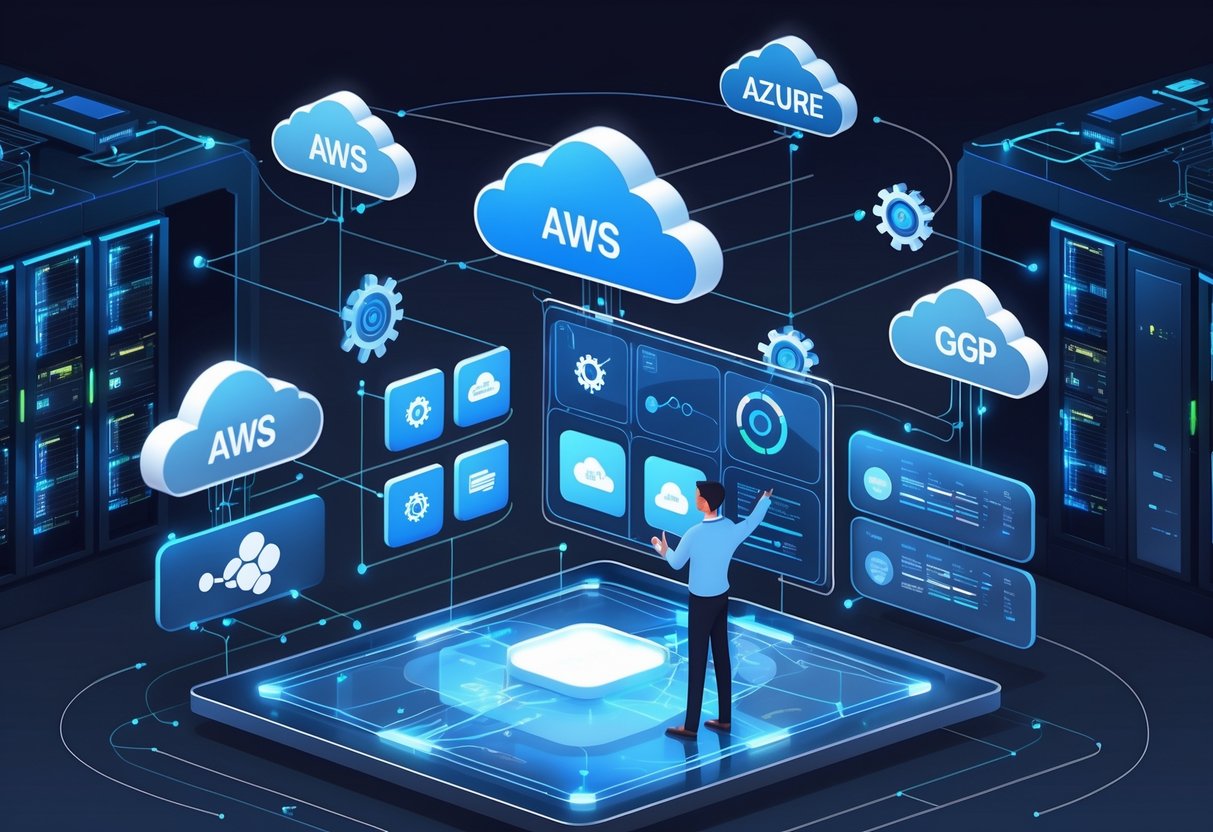
Analytics engineers need Docker skills to package data processing applications and Kubernetes knowledge to manage workloads at scale. Serverless functions like AWS Lambda handle event-driven analytics tasks without infrastructure management.
Docker and Kubernetes Fundamentals
Docker containers package analytics applications with all dependencies into portable units. This approach eliminates environment conflicts between development and production systems.
Analytics engineers use Docker to containerize data processing scripts, machine learning models, and ETL pipelines. Each container runs consistently across different cloud platforms.
Key Docker commands for analytics:
docker buildcreates container images from data processing codedocker runexecutes analytics workloads in isolated environmentsdocker pushuploads containers to cloud registries
Kubernetes orchestrates multiple containers across cloud clusters. It automatically scales analytics workloads based on data volume and processing demands.
Analytics teams deploy Kubernetes on AWS, Azure, and Google Cloud environments for consistent container management. The platform handles pod scheduling, service discovery, and load balancing for data processing tasks.
Orchestrating Analytics Workloads in the Cloud
Cloud orchestration manages complex analytics pipelines with multiple processing stages. Analytics engineers coordinate data ingestion, transformation, and output tasks across distributed systems.
Kubernetes orchestration features:
- Pod management runs analytics containers on available cluster nodes
- Service networking connects data processing components
- ConfigMaps and Secrets store database credentials and API keys
Each cloud provider offers managed Kubernetes services. Amazon EKS, Azure AKS, and Google GKE reduce operational overhead for analytics teams.
Containerization tools like Docker enable consistent deployment of analytics applications across different environments. Engineers package Python scripts, R models, and Spark jobs into portable containers.
Auto-scaling policies adjust compute resources based on data processing demands. This optimization reduces costs during low-activity periods and ensures performance during peak loads.
Serverless Computing: Lambda, Functions, and Cloud Functions
Serverless platforms execute analytics code without server management overhead. Functions trigger automatically when new data arrives or on scheduled intervals.
AWS Lambda processes data files uploaded to S3 buckets. Analytics engineers write Python or Node.js functions that clean, validate, and transform incoming datasets.
Azure Functions integrate with Power BI and Azure Data Factory pipelines. These serverless components handle data preprocessing and real-time analytics calculations.
Google Cloud Functions connect to BigQuery and Cloud Storage for event-driven processing. They execute analytics code when database changes occur or API calls arrive.
Serverless benefits for analytics:
- Zero infrastructure management
- Automatic scaling based on workload
- Pay-per-execution pricing model
- Built-in monitoring and logging
Functions complement containerized analytics workloads by handling lightweight processing tasks. They trigger larger container-based jobs when complex analysis requirements exceed serverless limitations.
Cost Management and Performance Optimization

Analytics engineers must balance cost efficiency with performance requirements across cloud platforms. Cost optimization strategies involve right-sizing resources, implementing autoscaling policies, and monitoring performance metrics to prevent budget overruns while maintaining optimal system performance.
Managing Cloud Costs and Billing
Effective cloud cost management starts with understanding billing structures across AWS, Azure, and GCP. Each platform offers native tools for tracking expenses and setting budget alerts.
AWS Cost Management Tools:
- AWS Cost Explorer for spending analysis
- AWS Budgets for cost alerts
- Trusted Advisor for optimization recommendations
Azure Cost Management:
- Azure Cost Management for detailed analytics
- Azure Advisor for resource optimization
- Budget alerts and spending limits
GCP Cost Control:
- Cloud Billing dashboards
- BigQuery exports for detailed analysis
- Committed use discounts for predictable workloads
Analytics engineers should implement resource right-sizing to match compute power with actual needs. This prevents paying for unused capacity while ensuring adequate performance for data processing tasks.
Storage optimization involves using appropriate tiers for different data access patterns. Hot storage costs more but provides faster access, while cold storage offers lower costs for archival data.
Autoscaling and Load Balancing
Autoscaling automatically adjusts resources based on demand, preventing both under-provisioning and over-provisioning. This ensures analytics workloads have sufficient compute power during peak times while reducing costs during low-usage periods.
AWS Autoscaling Options:
- EC2 Auto Scaling for compute instances
- Application Load Balancer for traffic distribution
- CloudWatch metrics for scaling triggers
Azure Scaling Solutions:
- Virtual Machine Scale Sets
- Azure Load Balancer for traffic management
- Azure Monitor for performance metrics
GCP Scaling Features:
- Compute Engine autoscaler
- Cloud Load Balancing for global distribution
- Cloud Monitoring for scaling decisions
Load balancing distributes incoming requests across multiple resources to prevent any single component from becoming overwhelmed. This improves both performance and reliability for analytics applications.
Analytics engineers should configure scaling policies based on CPU utilization, memory usage, and queue depth. Setting appropriate thresholds prevents unnecessary scaling events while ensuring responsive performance.
Troubleshooting and Cloud Optimization
Performance optimization requires systematic monitoring and troubleshooting of cloud resources. Analytics engineers must identify bottlenecks and implement solutions to maintain efficient data processing pipelines.
Common Performance Issues:
- Network latency between regions
- Storage I/O limitations
- Insufficient compute resources
- Inefficient query patterns
Monitoring tools provide insights into resource utilization and performance metrics. CloudWatch, Azure Monitor, and Cloud Monitoring offer real-time visibility into system health and performance trends.
Database optimization involves tuning queries, implementing proper indexing, and choosing appropriate storage types. Analytics workloads often benefit from columnar storage formats and in-memory caching.
Network optimization reduces data transfer costs and improves performance. Placing resources in the same region minimizes latency and egress charges for analytics pipelines.
Regular performance reviews help identify optimization opportunities. Essential cloud computing skills include analyzing performance metrics and implementing improvements based on usage patterns and business requirements.
Frequently Asked Questions
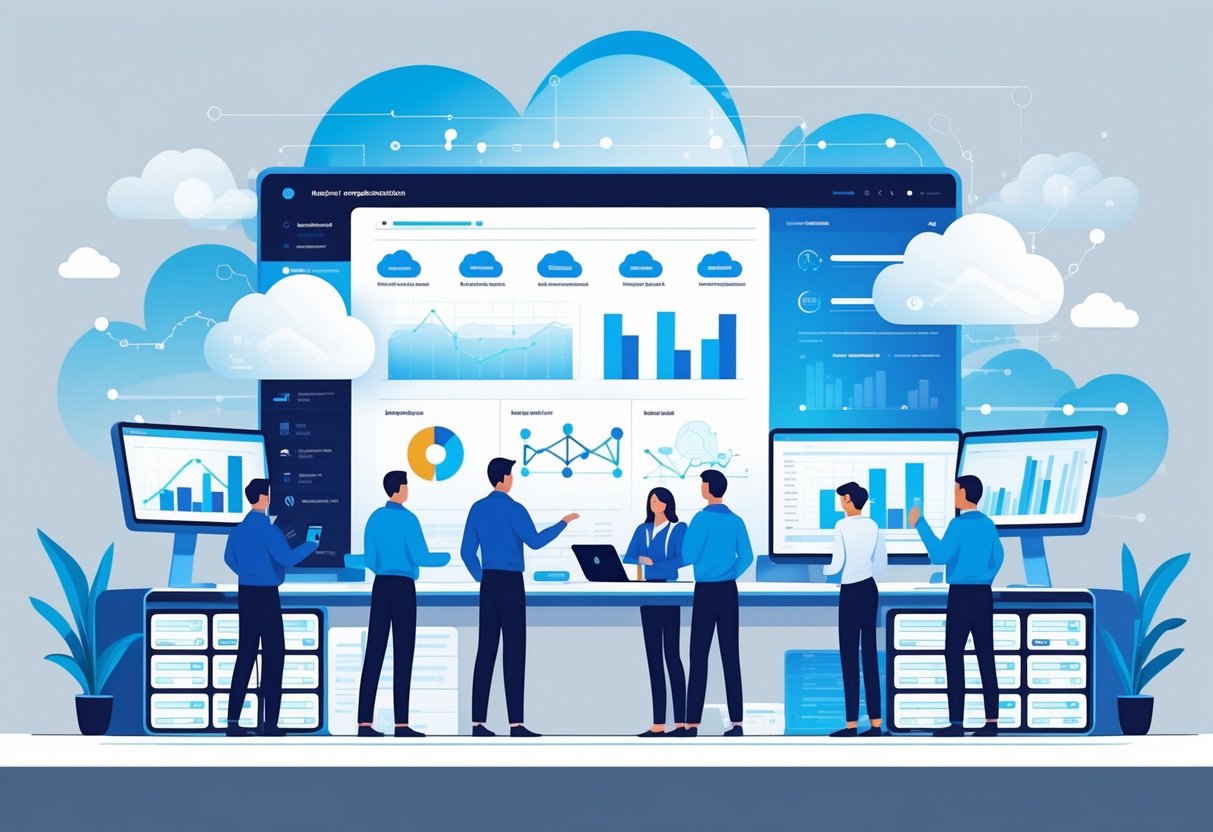
Analytics engineers entering cloud computing need specific technical skills, certifications, and security knowledge to succeed. Understanding data management across AWS, Azure, and GCP platforms forms the foundation for career advancement in this field.
What technical abilities should a beginner focus on when entering the field of cloud computing?
Beginners should master SQL and Python programming languages first. These tools form the backbone of data analysis and automation tasks.
Cloud platform basics come next. Learning how to navigate AWS, Azure, or GCP consoles helps build confidence with cloud interfaces.
Data pipeline creation skills are essential. Understanding ETL processes and how data moves between systems prepares engineers for real-world projects. Explore practice exercises to build these skills.
Version control with Git becomes crucial for collaboration. Most analytics teams use Git to manage code and track changes across projects.
Command line proficiency speeds up daily tasks. Basic Linux commands help engineers work more efficiently in cloud environments.
Which certifications are considered fundamental for analytics engineers working with AWS, Azure, or GCP?
AWS offers the Cloud Practitioner certification as an entry point. This covers basic cloud concepts and AWS services without requiring deep technical knowledge.
The AWS Certified Data Analytics specialty certification targets analytics professionals directly. It focuses on data collection, storage, processing, and visualization services.
Microsoft Azure provides the Azure Fundamentals certification for beginners. This introduces core cloud concepts and Azure-specific services.
The Azure Data Engineer Associate certification validates skills in data storage and processing. It covers Azure data services used in analytics workflows.
Google Cloud offers the Cloud Digital Leader certification for foundational knowledge. This certification covers basic cloud concepts and Google Cloud services.
The Professional Data Engineer certification from Google Cloud targets experienced practitioners. It requires hands-on experience with GCP data services and architecture design.
How can an analytics engineer demonstrate proficiency in cloud computing on their resume?
Portfolio projects showcase practical skills better than certifications alone. Building end-to-end data pipelines demonstrates real-world capabilities to employers. See premium projects for examples.
Specific technology mentions carry more weight than general statements. Listing exact services like Amazon Redshift, Azure Synapse, or BigQuery shows platform familiarity.
Quantifiable achievements make stronger impressions. Including metrics like “processed 10TB of daily data” or “reduced query times by 40%” provides concrete evidence.
Open-source contributions display coding abilities. GitHub repositories with well-documented analytics projects show technical depth and communication skills.
Cloud certification badges add credibility. Displaying current certifications from AWS, Azure, or GCP validates knowledge claims on resumes.
What is the importance of cloud security knowledge for analytics engineers in cloud environments?
Data protection requirements affect every analytics project. Engineers must understand encryption, access controls, and compliance regulations from the start.
Analytics engineers handle sensitive business data regularly. Knowledge of security best practices prevents data breaches and maintains customer trust.
Cloud platforms provide numerous security features. Understanding identity management, network security, and data governance tools becomes part of daily work.
Compliance frameworks like GDPR and HIPAA impact data handling procedures. Engineers need to implement appropriate controls when working with regulated data. For more on compliance, visit GDPR and HIPAA official resources.
Security incidents can halt analytics operations completely. Proactive security knowledge helps prevent costly downtime and reputation damage.
What are the recommended pathways for obtaining free cloud computing education for analytics engineers?
AWS provides free training through AWS Skill Builder. The platform offers comprehensive cloud computing courses and hands-on labs without cost.
Microsoft Learn offers Azure training modules at no charge. These interactive lessons cover analytics services and practical implementation scenarios.
Google Cloud Skills Boost provides free introductory courses for GCP services. The platform includes both theoretical concepts and practical exercises.
YouTube channels from cloud providers offer valuable tutorials. Official channels provide updated content on new features and best practices.
University partnerships often provide free access to cloud platforms. Students can access substantial credits for hands-on learning and experimentation.
How does understanding data management in cloud platforms enhance the role of an analytics engineer?
Cloud data storage options require different approaches than traditional databases. Understanding data lakes, warehouses, and hybrid solutions expands problem-solving capabilities. For hands-on experience with these concepts, explore our practice exercises and premium projects.
Scalability becomes automatic rather than manual. Engineers can design solutions that grow with business needs without infrastructure constraints. Leading cloud providers such as Microsoft Azure and Amazon Web Services offer robust scalability features.
Cost optimization skills become increasingly valuable. Understanding pricing models helps engineers design efficient solutions that control expenses. Refer to the Google Cloud Pricing page for authoritative information on cloud cost structures.
Integration capabilities multiply in cloud environments. Engineers can connect dozens of services to create comprehensive analytics ecosystems. Explore our games selection for interactive ways to learn about cloud integrations.
Real-time processing becomes more accessible. Cloud platforms provide streaming analytics tools that were previously difficult to implement on-premises. You can further develop your analytics skills with our quizzes.




